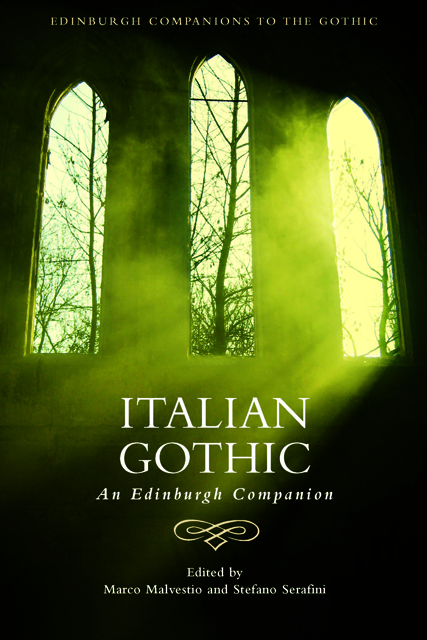10 - Comics and the Gothic
Published online by Cambridge University Press: 20 October 2023
Summary
You know you’re successful when you’ve pissed off your parents.
— David J. SchowThose who wish to know, have whole libraries at their disposal. That spirit, however, is no longer available.
— Giorgio PressburgerIntroduction
Late twentieth-century Italian Gothic could only proliferate thanks to cinema and, most of all, comic books. The economic boom of the 1960s gave comics a broader audience than that of schoolchildren; and, consequently, new purposes, other than being ‘funny’ and ‘instructive’, as earlier strips were required to do. Mass alphabetisation, raising of the school age, and improvement of living standards shaped teenagers as a new category of customers, while new practices and rituals (commuting, use of public transport, mass holidays) required non-demanding readings for adults, aimed at generating immediate enjoyment. In the 1960s, producing comics seemed an easy way of making a profit, which resulted in a veritable proliferation of makeshift publishers (Preianò 274): the majority of them were based in Milan, the capital city of Italy's publishing industry since the nineteenth century. This vast, semi-piratical market would become a fertile ground for the development of Gothic-oriented comic books, also thanks to the popularity of Gothic horror films and the dissemination of ‘occulture’ throughout the decade and beyond (Camilletti). In the 1970s, Italy's comic-book industry was, by sales, the second biggest worldwide after the Japanese, then the vast crisis undergone by the market between the late 1970s and early 1980s decimated Italian publishers, and by the mid-1990s only a few had sur vived. Tellingly, the last Italian comic to become a mass phenomenon was a horror book, Dylan Dog – still one of the best-selling, most representative Italian products.
The birth of a distinctly Italian industry of Gothic horror comics, ranging from classic horror (Sansoni's Horror) to postmodernist experiments (Dylan Dog), exploitation (the sexy-horror pocket-books of the 1970s and 1980s), splatter and gore (ACME's Splatter), was primarily due to the extreme freedom in which the Italian comic-book market was accidentally allowed to develop. Certainly, like everywhere in the industrial world, Italian comics were subject to recurrent, moralising attacks on the part of media and institutions.
- Type
- Chapter
- Information
- Italian GothicAn Edinburgh Companion, pp. 154 - 166Publisher: Edinburgh University PressPrint publication year: 2023

